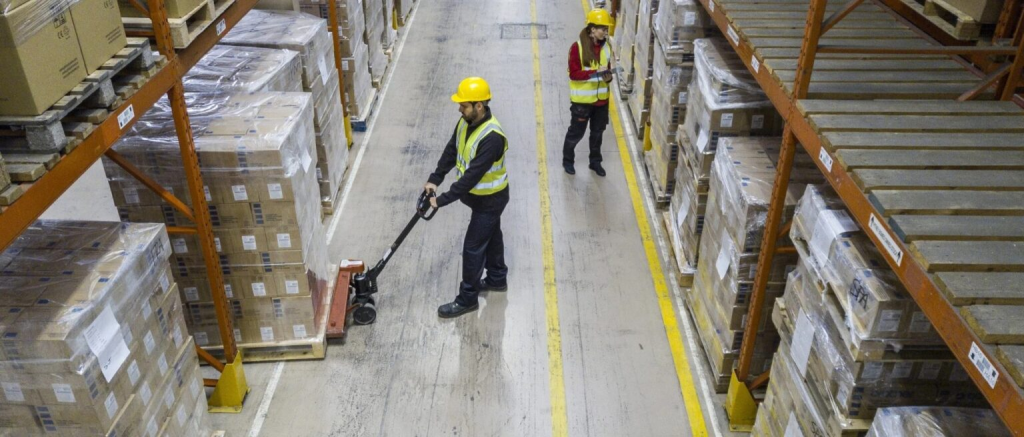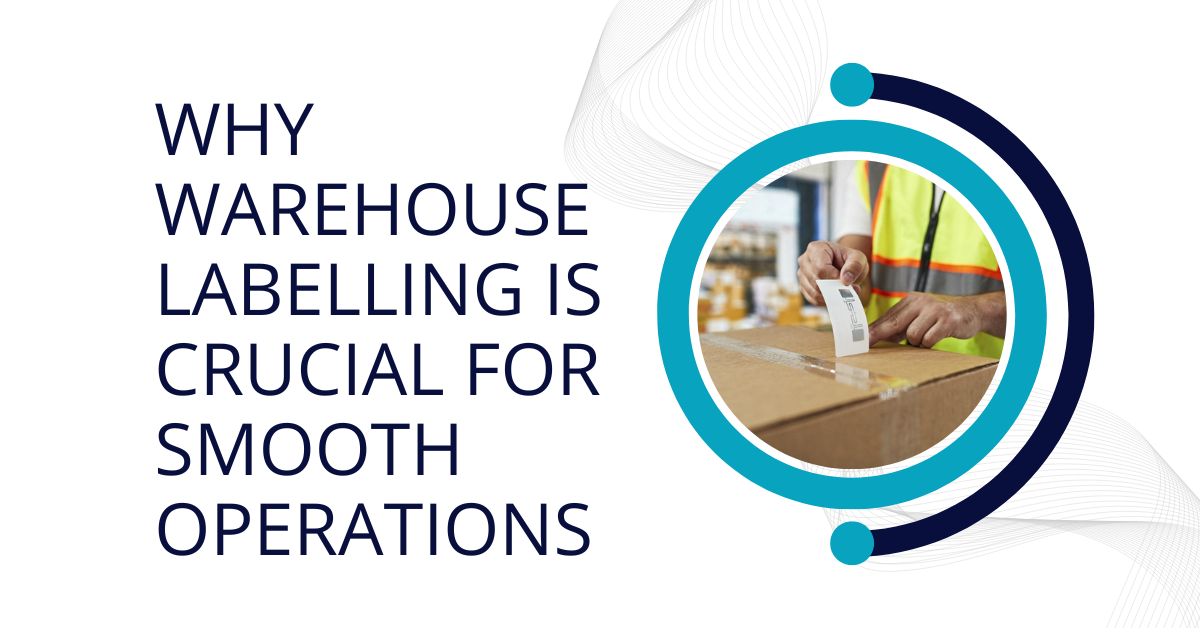Warehouse labelling plays a key role in the overall efficiency and smooth functioning of a warehouse. It might seem like a simple task at first glance, but it actually impacts many aspects of warehouse operations, from inventory management to safety and productivity. In this article, we’ll explore why warehouse labelling is so crucial, and how it can help streamline your operations.
What is Warehouse Labelling?
Warehouse labelling refers to the use of labels, tags, signs, and barcodes placed on items, shelves, racks, or locations within a warehouse. These labels help identify products, direct warehouse staff to the right locations, and ensure that all inventory is tracked properly.
Labels can come in various formats, including printed tags, barcodes, QR codes, and RFID tags, each offering different benefits depending on the complexity and needs of your warehouse. The primary goal of warehouse labelling is to make it easier to store, locate, and move inventory efficiently.
Note – If you’re looking to improve the efficiency and organization of your warehouse, investing in high-quality Warehouse Labelling solutions is a must. With the right labels and labellings, you can streamline operations, reduce errors, and enhance safety in your warehouse. Explore a range of reliable and customizable warehouse labelling options today to take your warehouse management to the next level.
How Warehouse Labelling Improves Efficiency
Reduces Errors
One of the biggest challenges in warehouse management is human error. Warehouse workers can often misplace items or incorrectly pick and pack products. This leads to delays, mistakes, and even customer dissatisfaction.
With clear and consistent warehouse labelling, workers are able to identify and locate products more easily. For instance, when products are clearly labelled with barcodes or QR codes, the system can instantly identify the product and its location in the warehouse. This significantly reduces the chance of errors during picking and packing, helping ensure that the right items reach the right customers on time.

Speeds Up Inventory Tracking
Inventory tracking is a critical aspect of warehouse operations. Without proper labelling, it can be time-consuming and difficult to keep track of stock levels, leading to overstocking or stockouts. This can negatively impact your business by causing unnecessary expenses or missed sales opportunities.
With an effective labelling system, inventory tracking becomes much quicker and more accurate. Warehouse staff can scan barcodes or RFID tags to instantly update inventory levels in real time. This allows for more accurate forecasting and ordering, ensuring that you never run out of stock or have excess inventory.
Improves Organization
A well-organized warehouse is crucial for smooth operations. Labelling makes it much easier to organize products and materials in your warehouse. When each product or storage location is clearly marked, warehouse staff can easily find what they need without wasting time searching through piles of unmarked goods.
With clear labels on shelves, aisles, and racks, your workers can quickly identify product categories, sizes, or types. This means less time spent looking for items and more time focused on fulfilling orders or moving inventory around the warehouse. An organized warehouse also reduces the chances of misplaced products, which can disrupt operations.
Helps with Order Fulfillment
Order fulfillment is a major part of warehouse operations. When orders come in, warehouse staff must find and pick the correct items, pack them, and ship them out. If your warehouse is not labelled correctly, this process becomes more time-consuming and error-prone.
By using effective labelling, warehouse workers can quickly locate items and pick them for orders. Labels provide key information such as product name, SKU (Stock Keeping Unit), and location within the warehouse. This makes the picking process much faster and more accurate, which in turn speeds up order fulfillment.
Warehouse Labelling and Inventory Management
Better Stock Visibility
Stock visibility refers to the ability to see and track your inventory in real-time. Clear and accurate labelling allows warehouse managers to keep track of stock levels, monitor inventory movement, and spot potential issues quickly.
For instance, when each item is clearly labelled with a barcode or RFID tag, it can be scanned and tracked throughout the warehouse. Whether the item is in storage, in transit, or on its way to being packed, its movement can be monitored easily. This allows for better control over stock levels, preventing overstocking or understocking.
Facilitates Stock Replenishment
Having proper labels in place makes stock replenishment easier. When inventory levels get low, the system can automatically flag items that need to be restocked. With clearly labelled stock, it’s much easier for warehouse managers to determine which products are running low and need to be reordered. This reduces the chance of stockouts and ensures that your warehouse is always ready to fulfill orders.
Prevents Stock Discrepancies
Stock discrepancies often arise from miscounting or errors in tracking inventory. These discrepancies can lead to problems with order fulfillment, stockouts, and inventory waste. However, warehouse labelling can help prevent these issues by ensuring that each product is accounted for and easily located.
Using barcode scanners or RFID systems, warehouse managers can track inventory in real time and spot any discrepancies immediately. If a product is missing or misplaced, the system can quickly identify the problem, allowing staff to resolve it before it affects operations.
The Role of Warehouse Labelling in Safety
Improves Workplace Safety
In a busy warehouse, safety is always a concern. Workers are often moving quickly, lifting heavy items, and navigating through aisles filled with stock. Having clear labelling on products and storage areas can help minimize accidents and injuries.
For example, labels on hazardous materials or heavy equipment can provide important safety information, such as handling instructions, weight limits, or warnings. This makes it easier for warehouse workers to safely handle products and avoid dangerous situations.
Labels can also be used to clearly mark aisles, exits, and emergency equipment, helping workers navigate the warehouse safely and quickly in case of an emergency.
Reduces the Risk of Accidents
Without proper labels, workers may be unaware of potential hazards. For example, if a box of fragile items is not clearly labelled, it could be mishandled and broken, creating a safety risk. Clear labelling helps workers handle products properly, reducing the chance of accidents.
Additionally, labelling can help identify areas where workers need to be more cautious, such as wet floors or areas with heavy machinery. By placing warning labels and safety signs throughout the warehouse, you can reduce the risk of accidents and create a safer working environment.
The Benefits of Warehouse Labelling for Compliance
Ensures Compliance with Industry Standards
Warehouse operations are often governed by various industry standards, safety regulations, and government requirements. These regulations often require businesses to track inventory, label hazardous materials, and maintain safety protocols. Warehouse labelling ensures that your business stays compliant with these regulations, preventing fines and legal issues.
For example, many industries require labels on hazardous materials to ensure that they are handled safely and disposed of properly. Labels can also be used to track products to ensure they are stored and shipped according to regulatory guidelines.
Makes Audits Easier
During an audit, inspectors will want to check that your warehouse is following all necessary rules and regulations. Warehouse labelling makes audits easier by providing clear and organized documentation of your inventory, safety procedures, and storage practices. Labels on products, racks, and shelves can help auditors quickly verify that your warehouse is compliant with industry standards.
Conclusion
Warehouse labelling is more than just a way to mark products and locations. It’s an essential part of running an efficient, organized, and safe warehouse. By reducing errors, speeding up inventory tracking, improving order fulfillment, and ensuring safety and compliance, warehouse labelling is crucial for smooth operations. Whether you’re running a small warehouse or managing a large distribution center, investing in a proper labelling system can save time, reduce costs, and improve the overall performance of your warehouse.
For more insightful articles related to this topic, feel free to visit blogsact.com
